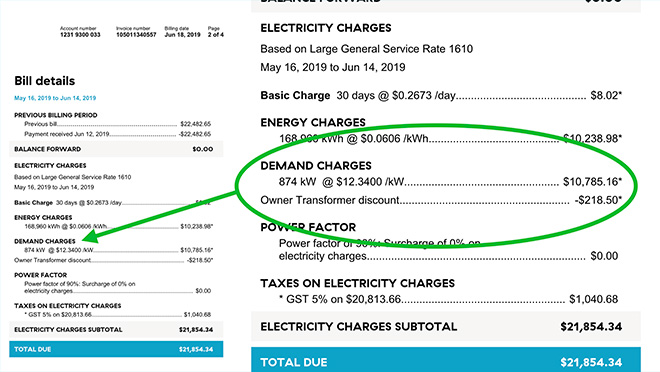Understand your demand

Demand charges can be a hidden opportunity for easy savings
When you're busy running a business, it's all too easy to overlook things that don't seem important – especially things like the demand charges on your BC Hydro bill. But understanding what demand charges are and how to control them can make a big difference to your bill without any infrastructure upgrades.
So what is demand? Here's how we define it on BCHydro.com:
Demand is the rate at which electricity is used, and is typically measured in kilowatts (kW). Peak demand is the highest rate of electricity use during a period of time. Our smart meters measure demand using 15-minute intervals with three consecutive five-minute sub-intervals. The highest 15-minute demand average recorded in each billing period is used to calculate the demand charge on your bill.
"In other words," says Steve Cao, Senior Program Manager, Industrial Marketing at BC Hydro, "We have to reserve that demand for you because if you get to that level just once, we need to reserve that amount for you moving forwards just in case you need it again. And if we reserve that amount for you, we can't use it somewhere else. So if you're only using that much electricity once or twice a year, it's clearly not an efficient use of your demand."
The total demand required across BC Hydro's service area determines the total amount of generating capacity and electrical infrastructure required. And so by reducing demand, less infrastructure is required.
How to reduce your demand
Reducing demand can be as simple as doing a walkthrough of your facility and switching off anything that's drawing power redundantly. But there are other ways of reducing demand that could add up to a big difference in your demand:
- Spread out your usage. If your facility houses lots of heavy manufacturing machinery that needs to run all day (or maybe even 24/7) you might wonder what kind of savings are possible. But if you're able to change shift patterns, you might be able to reduce the time everything is running simultaneously. Similarly, heavy machinery draws the most power on start up, so if your machinery has to be restarted every 24 hours, then staggering the restarts by 15-20 minutes can also have an impact.
- Review your machinery's operating manuals. It never hurts to review manufacturers' data and recommendations for optimum efficiency.
- Set up alerts. Sign up for free SMS and email alert features to get a better understanding of how things like seasonal changes and everyday habits affect your electricity use. To opt-in to our SMS and email alerts, log in to MyHydro and go to My Profile. Under My Profile you'll see Subscription & Alerts. If you don't already have a MyHydro Profile, begin by creating a profile here.
- Bring in a consultant. If you'd like to go further, your Key Account Manager or Regional Energy Manager should be able to connect you with a consultant who can run power tests at your facility and make some recommendations for change.
We'd like to hear more about your demand
Right now, we're actively looking into demand to see if we can develop a reduction program around it. We're partnering with different customers and vendors to test a variety of different technologies and approaches to target demand. If you'd like to be involved in leading the way towards demand reduction, ask your Key Account Manager, Regional Energy Manager – or contact the BC Hydro Business Helpdesk:
- industrial@bchydro.com
- 604 522 4713 (Lower Mainland)
- 1 866 522 4713 (Elsewhere in B.C.)